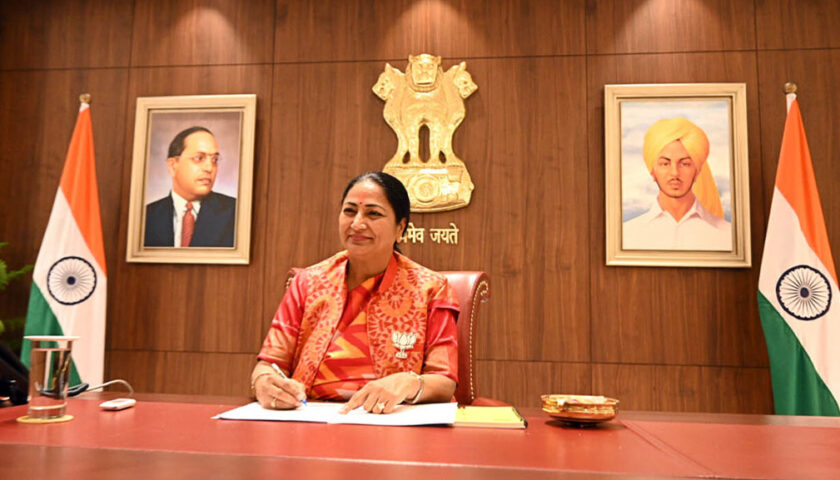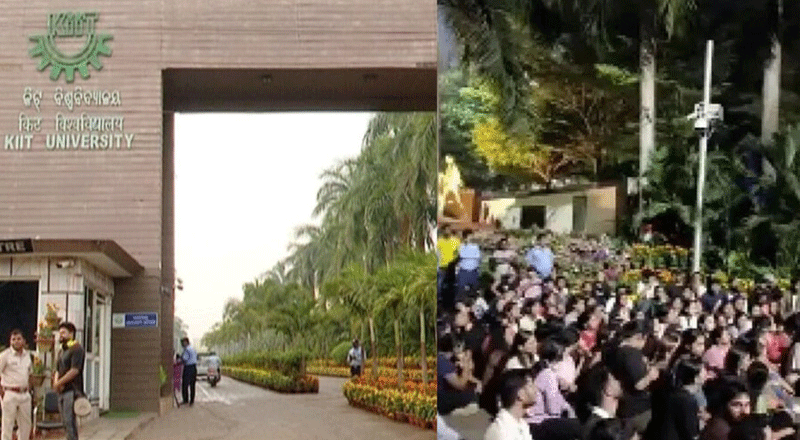- Unprecedented enhancement in budget allocation
The Budget allocation for Ministry of Agriculture & FW has been increased to Rs. 1,24,000 crore in 2022-23.
- Record food grains and horticulture production
Food grain production has increased from 308.65 million tonnes in January 2022 to 315.72 million tonnes in December 2022 (as per 4th advance estimates) which is the highest ever food grain production. As per third advanced estimates, horticulture production during 2020-21 was 331.05 million MT which is increased to 342.33 million MT during 2021-22. It is the highest ever production for Indian horticulture.
- Fixing of MSP at one-and-a half times the cost of production
- Government has increased the MSP for all mandated Kharif, Rabi and other commercial crops with a return of at least 50 per cent over all India weighted average cost of production from 2018-19.
- MSP for Paddy (common) has increased to Rs. 2040 per quintal in December, 2022 from Rs. 1940 per quintal in January, 2022.
- MSP for Wheat increased from Rs. 2015 per quintal in January, 2022 to Rs. 2125 per quintal in December, 2022.
- Launch of the National Mission for Edible Oils – Oil Palm – NMEO has been approved with a total outlay of Rs 11,040 crore. This will bring an additional area of 6.5 lakh ha under Oil Palm plantation with 3.28 lakh ha in the north-eastern states and 3.22 in the rest of India in the next 5 years. The major focus of the Mission is to provide Viability Prices of fresh fruit bunches (FFBs) to the farmers linked with assured procurement by industry with a simpler price fixing formula. The Central Government will compensate farmers through a viability gap payment if price paid by industry is below the viability price upto October, 2037.
- Increase in procurement from farmers
For the cropping year 2020-21, the Government through its Nodal Agencies procured 12,11,619.39 MT of Pulses and Oilseeds having MSP value of Rs.6,830.18 Crores benefitting 7,06,552 farmers whereas in the year 2021-22, a quantity of 31,08,941.96 MT of pulses, oilseeds and copra having MSP value of Rs. 17,093.13 crore benefiting 14,68,699 farmers has been done. Further, under procurement of Kharif 2021-22 season, a quantity of 2,24,282.01 MT of Pulses and Oilseeds having MSP vale of Rs. 1380.17 Crores benefiting 1,37,788 farmers was procured till January, 2022 whereas, under procurement of Kharif 2022-23 season, a quantity of 1,03,830.50 MT of pulses, oilseeds & copra having MSP Value of Rs. 915.79 crore benefiting 61,339 farmers has been procured till December, 2022.
- Income support to farmers through PM KISAN
- PM-KISAN scheme was launched in 2019 which is an income support scheme to farmers providing Rs. 6000 per year in 3 equal installments.
- In PM-KISAN scheme, Rs. 1.82 lakh crore was released to more than 11.74 crore farmers in January, 2022 whereas more than Rs. 2 lakh crore has been released so far to more than 11 crore eligible farmers till December, 2022.
- Pradhan Mantri Fasal BimaYojana (PMFBY)
- PMFBY was launched in 2016 addressing problems of high premium rates for farmers and reduction in sum insured due to capping.
- Since implementation, 29.39 crore applicant farmers were enrolled and over 9.01 crore (Provisional) applicant farmers have received claims of over Rs. 1,04,196 crore till January, 2022 which increased to 38 crore enrolled applicant farmers and over 12.24 crore (Provisional) farmer applicants have received claims of over Rs. 1,28,522 crore till December, 2022.
- Upto January, 2022 nearly Rs. 21532 crore were paid by farmers as their share of premium against which claims of over Rs.104196 crore (Provisional) were paid to them, thus for every 100 rupees of premium paid by farmers, they received Rs. 484 as claims whereas till December, 2022 nearly Rs. 25,192 crore were paid by farmers as their share of premium against which claims of over Rs. 1,28,522 crore (Provisional) have been paid to them, thus for every 100 rupees of premium paid by farmers, they have received about Rs. 510 as claims.
- Institutional credit for agriculture sector
- Institutional credit for agriculture sector was Rs. 16.5 lakh crore in January, 2022 which has been increased to Rs. 18.5 lakh crore in December, 2022.
- Benefit of concessional institutional credit through KCC at 4% interest per annum has also now been extended to Animal Husbandry and Fisheries farmers for meeting their short-term working capital needs.
- A special drive has been undertaken since February 2020 to provide concessional institutional credit with focus on covering all PM-KISAN beneficiaries through Kisan Credit Cards (KCC). Upto January, 2022, 291.67 lakh new KCC applications were sanctioned with a sanctioned credit limit of Rs. 3,19,902 crore as part of the drive which increased to 376.97 lakh sanctioned KCC applications with a sanctioned credit limit of Rs. 4,33,426 crore in December, 2022.
- Providing Soil Health Cards to farmers
Soil Health Card Scheme was introduced in the year 2014-15 to optimize usage of nutrients. The following number of cards have been issued to farmers.
- Cycle-I (2015 to 2017) – 10.74 crore
- Cycle-II (2017 to 2019)- 11.97 crore
- Model Village Programme (2019-20)- 19.64 lakh
Regulations for promotion of biostimulants is issued. Nano urea is included under fertilizer control order.
- Promotion of organic farming in the country
- Paramparagat Krishi Vikas Yojana (PKVY) was initiated in 2015-16 to promote organic farming in the country. Upto January, 2022, 30934 clusters were formed and an area of 6.19 lakh ha was covered benefitting 15.47 lakh farmers which increased to 32384 clusters and an area of 6.53 lakh ha has been covered benefitting 16.19 lakh farmers in December, 2022. In addition, Under Namami Gange Programme 123620 ha area covered and under natural farming 4.09 lakh ha area covered. Farmers in Uttar Pradesh, Uttarakhand, Bihar and Jharkhand have taken-up organic farming on either side of the river Ganga to control river water pollution as well as to fetch additional income to farmers.
- Government also proposes to promote sustainable natural farming systems through the scheme Bhartiya Prakratik Krishi Padhati (BPKP). The proposed scheme aims at cutting down cost of cultivation, enhancing farmer’s income and ensuring resource conservation and, safe and healthy soils, environment and food.
- Mission Organic Value Chain Development in North East Region (MOVCDNER) has been launched. Upto January, 2022, 170 Farmer Producer Companies have been formed comprising of 153116 farmers and covering 155495 ha area whereas till December, 2022, 379 Farmer Producer Companies have been formed comprising of 189039 farmers and covering 172966 ha area.
- In addition, to facilitate organic certification at affordable cost and easy to adopt approaches, a New Participatory Guarantee System (PGS) certification was launched during 2015. This PGS system is unique in the world and is the largest participatory organic certification programme in the world. Upto January, 2022, 11 lakh small and marginal farmers were certified under PGS certification whereas till December, 2022, 13.98 lakh small and marginal farmers are certified under PGS certification. A Jaivikkheti portal has been initiated to assist the small and marginal famers in selling their organic products directly to consumers. Around 5.73 lakh farmers were registered on the portal upto January, 2022 whereas 6.09 lakh farmers have been registered on the portal till December, 2022.
- In addition, quick certification of default organic areas such as islands, remote, hilly areas has been initiated under the Large Area Certification programme. This will enable small farmers to market certified products immediately without waiting for the normal certification period of 3 years. Around 14,445 ha in Car Nicobar Islands of the Andamans are now certified under the programme helping marginal farmers in the area for marketing certified products. Proposal of 5000 ha area has been received from Ladakh under LAC and fund Rs 11.475 lakh has been released Support for individual farmers for certification has also been introduced to encourage farmers to take up organic farming. The entire cultivable land of 2700 ha area of Lakshadweep has been certified as organic under LAC. Recently 60,000 ha area has also been supported for certification continuation in Sikkim and fund released Rs 96.39 lakh, which is the only 100% organic state in the world.
- Agri Infrastructure Fund
- Since the inception of AIF, upto January, 2022 the scheme sanctioned Rs.11,891 Crore worth agriculture infrastructure in the country for more than 16000 projects whereas till December, 2022 sanctioned Rs. 13,681 Crore worth agriculture infrastructure in the country for more than 18133 projects.
- With the support of the scheme, various agriculture infrastructures were created and some of the infrastructure is at the final stage of completion.
- Upto January, 2022, 4748 warehouses, 591 custom hiring centers, 155 assaying units, 550 primary processing units, 306 sorting & grading units, 267 cold store projects and around 2420 other kinds of post-harvest management projects and community farming assets were established which increased in December, 2022 to 8076 warehouses, 2788 primary processing units, 1860 custom hiring centers, 937 sorting & grading units, 696 cold store projects, 163 assaying units and around 3613 other kinds of post-harvest management projects and community farming assets.
- Promotion of FPOs
- A new Central Sector Scheme for Formation & Promotion of new 10,000 FPOs launched by Hon’ble Prime Minister on 29th February, 2020 with budget outlay of Rs 6865 Crore till 2027-28.
- A total of 2110 no. of FPOs were registered upto January, 2022 which increased to 4016 no. of FPOs till December, 2022 under new FPO scheme.
- A National Beekeeping and Honey Mission (NBHM) has been launched in 2020 as part of the AtmaNirbhar Bharat Abhiyan. Rs. 500 crore for the period 2020-2021 to 2022-2023 has been allocated for beekeeping sector. Upto January, 2022, 70 projects for assistance of about Rs. 118.00 crores were approved/ sanctioned for funding under NBHM whereas till December, 2022, 114 projects for assistance of about Rs. 139.23 crores have been approved/ sanctioned for funding under NBHM.
- Per Drop More Crop
Per Drop More Crop (PDMC) scheme launched during 2015-16 which aims to increase water use efficiency at the farm level through Micro Irrigation technologies i.e. drip and sprinkler irrigation systems. Upto January, 2022, an area of 60 lakh hectare has been covered which increased to 69.55 lakh hectare in December, 2022 under Micro irrigation through PDMC scheme.
- Micro Irrigation Fund
A Micro Irrigation Fund of initial corpus Rs 5000 crore has been created with NABARD. In the Budget Announcement for 2021-22, the corpus of the fund is to be increased to Rs.10000 crores. Upto January, 2022, projects worth Rs 3970.17 crore covering 12.83 lakh hectares were approved whereas till December, 2022 projects worth 4710.96 crore covering 17.09 lakh hectares have been approved.
- Agricultural Mechanization
- Agricultural mechanization is extremely vital to modernize agriculture and reduce drudgery of farming operations. During the period from 2014-15 to March, 2022 an amount of Rs.5490.82 crore have been allocated for agricultural mechanization.
- Numbers of machines and equipments provided to farmers on subsidy was 13,78,755 till January, 2022 which has increased to 13,88,314 in December, 2022.
- 18,824 custom hiring centers, 403 high-tech hubs and 16,791 farm machinery banks are functioning in December, 2022 while 16,007 custom hiring centers, 378 high-tech hubs and 16309 farm machinery banks were available till January, 2022 to make available agricultural machines and equipments to the farmers on rental basis.
- During the current year 2022-23, so far an amount of Rs. 504.43 Crores have been released for distribution of around 65302 machines on subsidy, establishment of 2804 CHCs, 12 Hi-tech hubs and 1260 Village Level Farm Machinery Banks.
- In order to support the efforts of the Government of Punjab, Haryana, Uttar Pradesh and NCT of Delhi to address air pollution due to crop residue burning, funds amounting to Rs.2440.07 crores have been released to these States during the period from 2018-19 to 2021-22, for crop residue management through mechanization interventions. 38422 Custom Hiring Centres (CHCs) of crop residue management machines have been established and more than 2.07 lakh machines have been supplied to these CHCs and individual farmers of these four States. During the current year, an amount of Rs. 698.10 Crores have been released and the States have targeted to supply 47500 crop residue management machines for in-situ and ex-situ management of crop residue.
- Looking into the unique advantages of Drone technologies in agriculture, a Standard Operating Procedures (SOPs) released the for use of drones in pesticide and nutrient application in public domain on 21.12.2021, which provides concise instructions for effective and safe operations of drones.
- In order to make this technology affordable to the farmers and other stakeholders of this sector, financial assistance @ 100 % cost of drone together with the contingent expenditure is extended under Sub-Mission on Agricultural Mechanization (SMAM) for its demonstration on the farmer’s fields
- In order the provide agricultural services through drone application, financial assistance @ 40% of the basic cost of drone and its attachments up to a maximum of Rs. 4.00 lakhs, is provided for drone purchase by Custom Hiring Centers (CHCs) under Cooperative Society of Farmers, FPOs and Rural entrepreneurs. The agriculture graduates establishing CHCs are eligible to receive financial assistance @ 50% of the cost of drone up to a maximum of Rs. 5.00 lakhs. Apart from above, the individual farmers are also eligible for financial assistance and the Small and Marginal Farmers, SC/ST Farmers, Women Farmers and the Farmers of the North Eastern States are provided financial assistance @ 50% of the cost of drone up to a maximum of Rs. 5.00 lakhs. The other farmers are provided financial assistance @ 40% of the cost of drone up to a maximum of Rs. 4.00 lakhs
- From within the funds of SMAM, so far an amount of Rs. 124.26 crores have been released towards Kisan drone promotion, which include purchase of 317 Drones for their demonstration in 79070 hectares of land and supply of 239 drones to the farmers on subsidy and also supply of 1519 drones to the CHCs for providing drone services to the farmers on rental basis.
- Setting up of E-NAM extension Platform
- Till December, 2022, 1260 mandis of 22 States and 03 UTs have been integrated on e-NAM platform, which was 1000 mandis of 18 states and 03 UTs in January, 2022.
- 1.72 Crore Farmers and 2.13 Lakh traders were registered on e-NAM portal till January, 2022 which have increased to more than 1.74 Crore Farmers and 2.37 Lakh traders in December, 2022.
- Total volume of 6.80 Crore MT and 20.05 Crore numbers (bamboo, betel leaves, coconut, lemon & sweet corn) collectively worth approximately Rs. 2.33 lakh crore of trade has been recorded on e-NAM platform till December, 2022 while total volume of 5.37 crore MT and 12.29 crore numbers (bamboo, betel leaves, coconut, lemon & sweet corn) collectively worth approximately Rs. 1.72 lakh crore of trade was recorded in January, 2022.
- Improvement in farm produce logistics, Introduction of Kisan Rail.
Kisan Rail has been launched by Ministry of Railways to exclusively cater to movement of perishable agrihorti commodities. First Kisan Rail was started in July 2020. Upto January, 2022, 1900 services on 155 routes were operated which were increased to 2359 services on 167 routes in December, 2022.
- MIDH – Cluster Development Programme:
The Cluster Development Programme (CDP) is designed to leverage geographical specialisation of horticulture clusters and promote integrated and market-led development of pre-production, production, post-harvest, logistics, branding, and marketing activities. MoA&FW has identified 55 horticulture clusters, of which 12 have been selected for the pilot phase of the CDP. On the recommendation of State Government, Cluster Development Agencies have been appointed for all the clusters. Cluster Gap Assessment Report of all 12 clusters have been finalised. Expressions of Interest (EOIs) have been floated for all 12 clusters for selecting Implementing Agencies (IAs) for implementation of the programme and in this regard, the application window is opened for uploading their proposals.
- Creation of a Start-up Eco system in agriculture and allied sector
- Till January, 2022, 799Startups were finally selected by different Knowledge Partners (KPs) and Agribusiness Incubators (R-ABIs) and their numbers increased to 1055 Startups in December, 2022.
- Till December, 2022, Rs. 6317.91 lakhs grants-in-aid has been released in installments to the respective KPs & R-ABIs as support by DA&FW, while it was 3790.11 lakh in January, 2022.
22. Achievement in Export of Agri and Allied Agri- Commodities
The country has witnessed emphatic growth in export of agri and allied commodities. As compared to previous year 2020-21, the Agri and allied export has increased from 41.86 billion USD in 2020-21 to 50.24 billion USD in 2021-22 i.e. an increase of 19.99%.
The major commodities which posted significant growth as compared to previous year have been Wheat 273.54% (567.93 to 2121.46 Million USD), Other than Basmati Rice 27.29% (4810.80 to 6123.82 Million USD), Cotton raw including waste 48.43% (1897.21 to 2816.24 Million USD), Castor Oil 28.16% (917.24 to 1175.51 Million USD), Other cereals 53.82% (705.38 to 1085.05 Million USD), Coffee 41.84% (719.66 to 1020.74 Million USD), Fresh Fruits 14.11% (768.54 to 876.96 Million USD).
The export of Agri and allied commodities during in April-October, 2022 was 30.21 billion USD to 26.98 billion USD in the same period of 2021-22 i.e. an increase of 11%.





